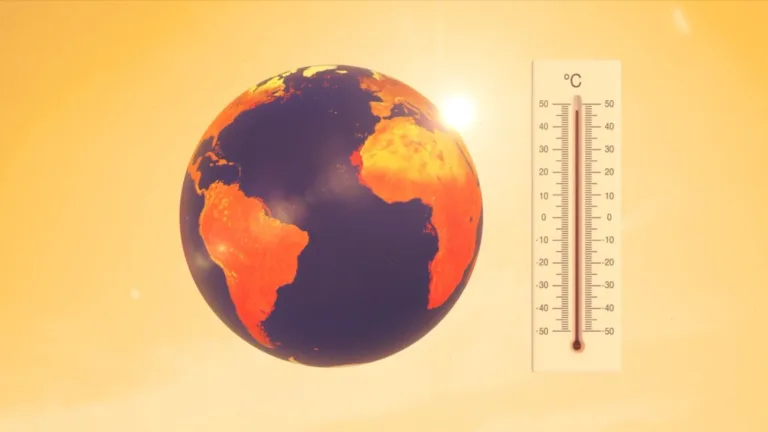

2023 goes down as the hottest year on record
The European Union’s Copernicus Climate Change Service has declared 2023 as the hottest year on record.
In the days leading up to his final lecture after 35 years as a college professor, Robert Sterner pondered what to say.
Should he even tell his students at the University of Minnesota Duluth that it was his last lecture?
Most of his talk – on global ecology – was already prepared. But as he reflected on the arc of his career, another idea began to dawn.
Perhaps he could personalize the lesson by looking at how Earth’s ecology had changed since his first lecture, at the University of Texas, Arlington in 1988.
“That sent me on a treasure hunt,” said Sterner, who has been director of the University’s Large Lakes Laboratory for a decade. The biologist also serves as president of the Northeastern Association of Marine and Great Lakes Laboratories.
After spending a half day pulling data together into charts and graphics, he found an array of stunning observations and even a few hopeful statistics. Of course, he knew the world had changed since he began teaching ecology 35 years ago, but seeing the contrast, like a “before and after” picture, drove home the difference and made it feel more real to him – and to his students.
His official retirement won’t come until the end of this semester, but the classroom teaching is over, which “has hit me harder than anything else,” he said. “That connection you have with the students is just so intense.”
At the end of his lecture, his students clapped, a rarity in the classroom, he said. Inspired by their reaction, he posted a condensed version in a thread on X.
The response to that thread was “beyond my wildest imaginations,” he said. “It’s up to 65,000 page views, which for a college professor is like Taylor Swift.”
Sterner already knew some of the numbers he’d find, but looking at all the facts together over his professional lifetime was “really powerful,” he said.
“Things are changing. We see those (big numbers) every day, and they’re just numbers,” he said. “But then you make them relevant to human existence, and suddenly they really feel different.”
A changing world
When he earned his Ph.D. at the University of Minnesota in 1986, there were 4.9 billion people on Earth. The numbers crept up slowly while he studied in Germany and began teaching at the University of Texas in 1988.
By the time he returned to the University of Minnesota in the Twin Cities in 1994, the growth rate of the world’s population had begun to decline, but another half-billion people already shared the planet.
During the 29 years he devoted to the University of Minnesota, the globe’s population exploded by more than 45%, to more than 8 billion people.
The world he’ll be spending more time in with his grandchildren is also much wetter than when he first started studying the ecology of lakes and teaching. He was surprised to find more of the planet’s surface is covered with water, thanks to dam construction, melting glaciers and lake creation.
Visualizing climate change Global warming’s impact on Earth explored
It was the loss of Arctic sea ice that “kind of blew me away,” he said. “I already appreciated how much Arctic ice had disappeared, but looking at the data as I plotted it, the loss of Arctic ice is just gigantic.”
“It’s been declining at about 12.2% per decade,” he said. “Clearly, Arctic ice is on the way out.”
Scientists attribute that melt to a world about a degree warmer than when he first walked into that Texas classroom as a much younger and thinner assistant professor.
The Arctic is warming four times as fast as the rest of the planet and global sea levels have risen by more than four inches.
Today, carbon dioxide emissions are also more than 60% higher than they were in 1988 and the level of carbon dioxide in the atmosphere has climbed by more than 20%, he said.
Parting advice
But Sterner thought it also was important to focus on some of the things that have improved since he began teaching.
“It’s not all gloom and doom. We can make a difference,” he said. Celebrating success underscores the fact that “people have agency, to improve things.”
He pointed, for example, to the declining levels of chlorofluorocarbons in the atmosphere, thanks to the Montreal Protocol after the ozone hole was discovered over Antarctica. The international treaty, signed the year before he started teaching, phased out the use of ozone-depleting chemicals such as spray foams and aerosols like deodorants.
“The ozone hole was kind of a poster child of scientific diagnosis,” he said. It only took two years from discovery of the ozone hole in 1985 until the protocol was adopted, he said. “That’s warp speed.”
He also noted other improvements, including increased human life expectancy and the adoption of ballast water requirements in ships that slowed the arrival of invasive species into the Great Lakes.
“We can affect what I would consider positive environmental change,” Sterner said. “We can make a difference, and I ended my lecture just saying, ‘It’s your job to add to the list of positives and subtract from the list of negatives.’”